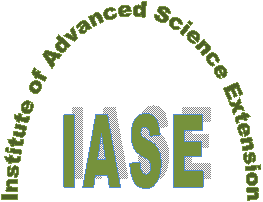International
ADVANCED AND APPLIED SCIENCES
EISSN: 2313-3724, Print ISSN: 2313-626X
Frequency: 12
![]()
Volume 9, Issue 11 (November 2022), Pages: 20-33
----------------------------------------------
Original Research Paper
Extensive curriculum assessment as the basis for a proposed Augustinian K to 12 curriculum in selected Philippines educational institutions
Author(s): Rizzamila R. Superio *
Affiliation(s):
College of Education, Northern Iloilo State University, Estancia, Iloilo, Philippines
* Corresponding Author.
 Corresponding author's ORCID profile: https://orcid.org/0000-0002-2812-8247
Corresponding author's ORCID profile: https://orcid.org/0000-0002-2812-8247
Digital Object Identifier:
https://doi.org/10.21833/ijaas.2022.11.003
Abstract:
This quantitative-qualitative research aimed to assess the existing K to 12 curriculum of the member schools of the Province of Santo Niño de Cebu in terms of learning objectives, learning content, learning experiences, and evaluation of learning outcomes. This study utilized the one hundred sixty-two (162) administrators and teachers as respondents coming from the member schools of the Province of Santo Niño de Cebu namely, Colegio San Agustin-Biñan, University of San Agustin, Colegio San Agustin-Bacolod, Colegio del Santo Niño, and San Jose Catholic School in the Philippines. Using Hilda Taba’s linear model, the result showed that the level of implementation of the existing curriculum of the member schools in terms of the four curriculum components, except for the evaluation of learning outcomes, was extensive and functioning excellently. There is no significant difference in the K to 12 curriculum in terms of learning objectives when schools are grouped according to location and accreditation status. As to learning content, learning experiences, and evaluation of learning outcomes, significant differences existed when schools are categorized as to years of existence, enrolment size, type of school, and academic qualification of faculty members. Therefore, any educational institution should maintain its quality and excellent education by ensuring that its curricular offerings are reviewed periodically in terms of the four curriculum components mentioned in this study.
© 2022 The Authors. Published by IASE.
This is an
Keywords: Curriculum assessment, Curriculum components, K to 12 curriculum, Quantitative research, Qualitative research
Article History: Received 10 April 2022, Received in revised form 19 July 2022, Accepted 21 July 2022
Acknowledgment
No Acknowledgment.
Compliance with ethical standards
Conflict of interest: The author(s) declared no potential conflicts of interest with respect to the research, authorship, and/or publication of this article.
Citation:
Superio RR (2022). Extensive curriculum assessment as the basis for a proposed Augustinian K to 12 curriculum in selected Philippines educational institutions. International Journal of Advanced and Applied Sciences, 9(11): 20-33
Figures
No Figure
Tables
Table 1 Table 2 Table 3 Table 4 Table 5 Table 6 Table 7 Table 8 Table 9 Table 10 Table 11 Table 12 Table 13 Table 14
----------------------------------------------
References (18)
- Adarlo G and Jackson L (2017). For whom is K-12 education: A critical look into twenty-first century educational policy and curriculum in the Philippines. In: Choo S, Sawch D, Villanueva A, and Vinz R (Eds.), Educating for the 21st century: 207-223. Springer, Singapore, Singapore. https://doi.org/10.1007/978-981-10-1673-8_11 [Google Scholar]
- Almerino PM, Ocampo LA, Abellana DPM, Almerino JGF, Mamites IO, Pinili LC, and Peteros ED (2020). Evaluating the academic performance of K-12 students in the Philippines: A standardized evaluation approach. Education Research International, 2020: 8877712. https://doi.org/10.1155/2020/8877712 [Google Scholar]
- Alsubaie MA (2016). Curriculum development: Teacher involvement in curriculum development. Journal of Education and Practice, 7(9): 106-107. [Google Scholar]
- Amirrudin M, Nasution K, and Supahar S (2021). Effect of variability on Cronbach alpha reliability in research practice. Jurnal Matematika, Statistika dan Komputasi, 17(2): 223-230. https://doi.org/10.20956/jmsk.v17i2.11655 [Google Scholar]
- Ancho I (2019). Quality assurance and the Philippine education system: Inputs from future Filipino school leaders. Jurnal Penjaminan Mutu, 5(2): 197-202. https://doi.org/10.25078/jpm.v5i2.850 [Google Scholar]
- Barker B (1985). Curricular offerings in small and large high schools: How broad is the disparity. Research in Rural Education, 3(1): 35-38. [Google Scholar]
- Cardona RS (2017). Teachers and students’ knowledge, beliefs, and observations on the implementation of grades 7 and 8 K-12 mathematics program. International Journal for Educational Studies, 10(1): 43-52. [Google Scholar]
- de Ramos-Samala H (2018). Spiral progression approach in teaching Science: A case study. In the 4th International Research Conference on Higher Education, KnE Social Sciences, Bali, Indonesia, 2018: 555-567. https://doi.org/10.18502/kss.v3i6.2404 [Google Scholar]
- Decano RS, Paring IRB, and Cereno ACC (2021). Determining factors to students’ science achievement in the implementation of K to 12 spiral progression approach: A mixed method. International Journal of Educational Research Review, 6(1): 46-54. https://doi.org/10.24331/ijere.815698 [Google Scholar]
- Dunton JB and Co WS (2019). Spiral progression approach in teaching science and the performance of learners in District I, Capiz. Journal of Physics: Conference Series, 1254 (1): 012045. https://doi.org/10.1088/1742-6596/1254/1/012045 [Google Scholar]
- Fernando AR, Retumban J, Tolentino R, Alzona A, Santos F, and Taguba M (2019). Level of preparedness of STEM senior high school graduates in taking up engineering program: A Philippine setting. In the IEEE International Conference on Engineering, Technology and Education, IEEE, Yogyakarta, Indonesia: 1-6. https://doi.org/10.1109/TALE48000.2019.9225858 [Google Scholar]
- Huizinga T, Handelzalts A, Nieveen N, and Voogt JM (2014). Teacher involvement in curriculum design: Need for support to enhance teachers’ design expertise. Journal of Curriculum Studies, 46(1): 33-57. https://doi.org/10.1080/00220272.2013.834077 [Google Scholar]
- Ibrahim HAH (2014). Quality assurance and accreditation in education. Open Journal of Education, 2(2): 106-110. https://doi.org/10.12966/oje.06.06.2014 [Google Scholar]
- Igcasama RM (2021). Teachers and students’ perceptions on the implementation of K-12 spiral progression approach. International Journal of Indonesian Education and Teaching, 5(1): 116-124. https://doi.org/10.24071/ijiet.v5i1.2983 [Google Scholar]
- Mahmoudi S, Jafari E, Nasrabadi HA, and Liaghatdar MJ (2012). Holistic education: An approach for 21 century. International Education Studies, 5(2): 178-186. https://doi.org/10.5539/ies.v5n3p178 [Google Scholar]
- Seco-Macarandan RM (2014). Assessment of the AralingPanlipunan modules in the K-12 curriculum: Enhanced instructional materials development. International Conference on Economics, Social Sciences and Languages, Singapore, Singapore: 89–92. [Google Scholar]
- Wang K (2021). The comparative analysis of Philippine and Chinese education. International Journal of Social Science and Education Research, 4(4): 58-61. [Google Scholar]
- Williams C (2007). Research methods. Journal of Business and Economic Research, 5(3): 65–72. [Google Scholar]

